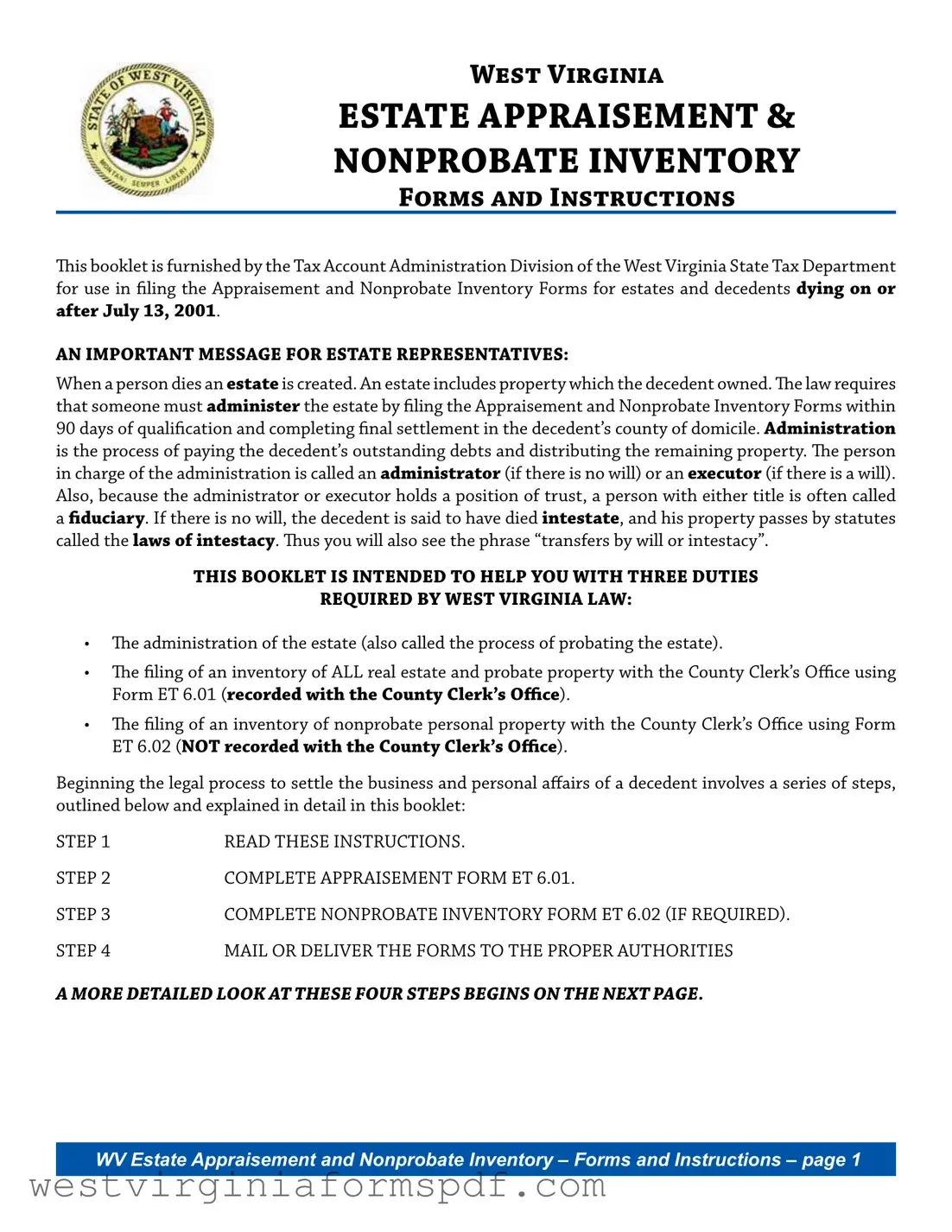The West Virginia Estate form shares similarities with the Federal Estate Tax Return (Form 706). Both documents require the fiduciary to report the decedent's assets and liabilities. The Federal Estate Tax Return is used to calculate the estate tax owed to the federal government, while the West Virginia form focuses on local estate administration. Both forms aim to ensure that all assets are properly accounted for and valued as of the decedent's date of death.
Another document akin to the West Virginia Estate form is the Last Will and Testament. A will outlines how a person's assets will be distributed upon their death. Like the West Virginia Estate form, a will requires accurate information about the decedent's assets. While the will directs the distribution, the estate form is necessary for the legal process of administering the estate and ensuring compliance with state laws.
The Probate Inventory is another similar document. This inventory is often required in many states to list all assets of the estate. The West Virginia Estate form includes a similar inventory requirement, detailing both probate and nonprobate assets. Both documents serve the purpose of providing a comprehensive overview of the decedent's estate to facilitate proper distribution and tax assessment.
The Affidavit of Heirship is another document that relates to the West Virginia Estate form. This affidavit is used to establish the rightful heirs of a decedent's estate, especially when there is no will. Like the estate form, it helps clarify ownership and distribution of assets. Both documents are crucial for settling the estate and ensuring that the correct beneficiaries receive their inheritance.
The Small Estate Affidavit is also comparable to the West Virginia Estate form. In situations where the decedent's assets fall below a certain threshold, this affidavit allows heirs to claim assets without going through the full probate process. Similar to the estate form, it requires accurate information about the decedent's assets and their value, streamlining the process for smaller estates.
The Executor's Deed is another related document. This deed is used to transfer real property from the decedent's estate to the beneficiaries or heirs. It requires the executor to provide proof of their authority to act on behalf of the estate, similar to the fiduciary responsibilities outlined in the West Virginia Estate form. Both documents ensure that property is transferred legally and in accordance with the decedent's wishes.
The Declaration of Trust is also similar to the West Virginia Estate form. This document outlines the terms of a trust established by the decedent. Like the estate form, it requires detailed information about the assets held in trust and their management. Both documents are essential for ensuring that the decedent's wishes regarding asset distribution are honored.
The Durable Power of Attorney is another document that bears similarity. This legal document allows an individual to act on behalf of the decedent in financial matters. While the West Virginia Estate form addresses the administration of the estate post-death, the Durable Power of Attorney is relevant during the decedent's lifetime. Both documents emphasize the importance of clear authority in managing assets.
The New York Boat Bill of Sale form serves as a vital document in the sale and purchase process of a boat in New York, ensuring that all pertinent details are accurately recorded for both buyers and sellers. It plays a crucial role in protecting the interests of the parties involved in the transaction, reflecting the importance of maintaining legal compliance. For those seeking more information about this essential document, you can visit https://smarttemplates.net.
The Notice to Creditors is comparable as well. This document informs creditors of the decedent's passing and provides them an opportunity to make claims against the estate. Similar to the West Virginia Estate form, it is a crucial step in the estate administration process, ensuring that all debts are settled before assets are distributed to heirs.
Lastly, the Certificate of Death is a vital document that correlates with the West Virginia Estate form. This certificate serves as official proof of the decedent's passing, which is necessary for initiating the estate administration process. Both documents are foundational in establishing the legal framework required for settling an estate.
